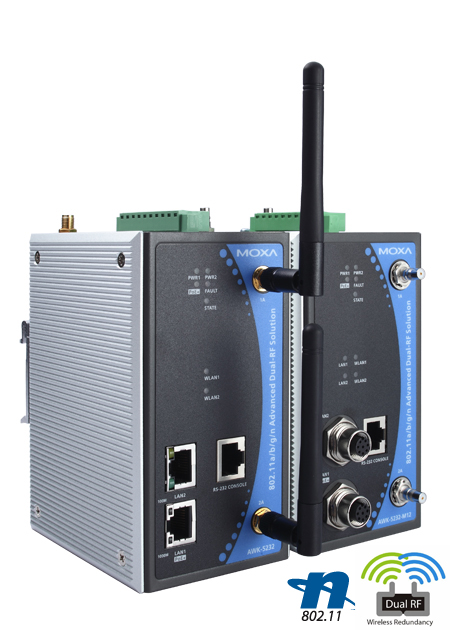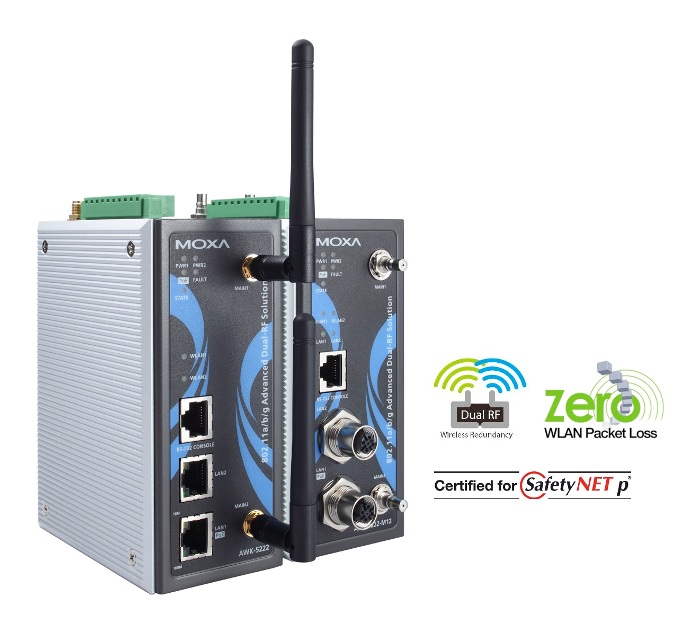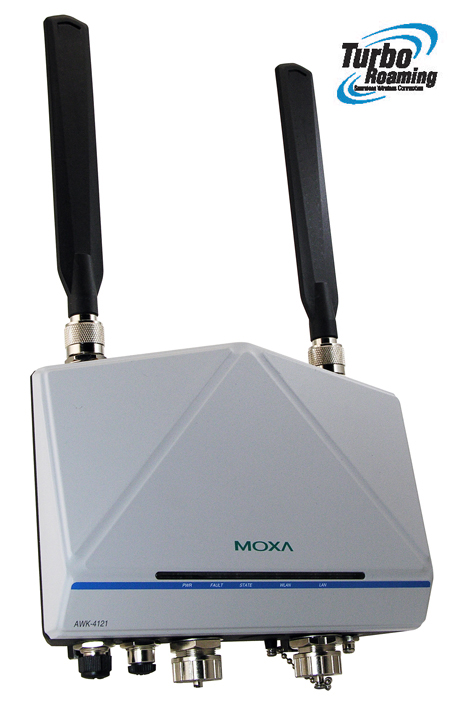 1-port RS-232 or RS-232/422/485 GSM/GPRS modems
1-port RS-232 or RS-232/422/485 GSM/GPRS modems
The OnCell G2111/G2151I series of industrial quad-band GSM/GPRS modems are designed to transmit data and short messages (SMS) over GSM/GPRS mobile networks. The modems can be used to increase the efficiency of maintenance and communication, but do not require extensive training. In addition, the modems can be mounted on a DIN rail or wall. The OnCell G212111/G2151I series modems accept a 12 to 48 VDC power input, making them suitable for use with a variety of field power sources. The serial ports feature 15 kV ESD line protection to protect the products from harmful electrical discharge, and separate RS-232 and RS-422/485 interfaces are built into the OnCell G2151I, each with 2.5 kV RMS isolation protection for one minute. The two serial interfaces on the OnCell G2151I make it ideal for attaching all kinds of devices, such as stand-alone controllers, PC COM ports, and multi-dropped electric meters. In addition, the OnCell G2111-T has an extended operating temperature (-25 to 70°C) design that makes it suitable for heavy industrial use.
Feature :
Features and Benefits
- Quad-band GSM/GPRS 850/900/1800/1900 MHz
- Separate RS-232 and RS-422/485 serial interfaces (G2151I only)
- 2.5 kV RMS isolation for 1 min. for all serial signals (G2151I only)
- Extended operating temperature from -25 to 70°C (G2111-T only)
- LED indicators for GSM/GPRS and data transmission status
- DIN-rail and wall mounting
Diagram :
Specification :
| • Cellular Interface | |
| Standards | GSM/GPRS |
| Band Options | Quad-band 850/900/1800/1900 MHz |
| GPRS Multi-slot Class | Class 10 |
| GPRS Terminal Device Class | Class B |
| GPRS Coding Schemes | CS1 to CS4 |
| CSD Data Transmission Rate | Up to 14,400 bps |
| Tx Power | 1 watt GSM 1800/1900, 2 watts EGSM 900/GSM 850 |
| • SIM Interface | |
| Number of SIMs | 1 |
| SIM Control | 3 V |
| • Serial Interface | |
| Number of Ports | 1 |
| Serial Standards | OnCell G2111: RS-232 (DB9 female connector) OnCell G2111-T: RS-232 (DB9 female connector) OnCell G2151I: RS-232 (DB9 female connector), RS-422/485 (5-pin terminal block connector) |
| ESD Protection | 15 kV (G2111 only) |
| Optical Isolation | 2.5 kV (G2151I only) |
| • Serial Communication Parameters | |
| Data Bits | 8 |
| Stop Bits | 1 |
| Parity | None |
| Flow Control | RTS/CTS |
| Baudrate | 300 bps to 230.4 kbps |
| • Serial Signals | |
| RS-232 | TxD, RxD, RTS, CTS, DTR, DSR, DCD, RI, GND |
| RS-422 | Tx+, Tx-, Rx+, Rx-, GND |
| RS-485-4w | Tx+, Tx-, Rx+, Rx-, GND |
| RS-485-2w | Data+, Data-, GND |
| • Physical Characteristics | |
| Housing | ABS + PC, IP30 protected |
| Weight | 150 ± 5 g |
| Dimensions | 27 x 123 x 79 mm (1.06 x 4.84 x 3.11 in) |
| • Environmental Limits | |
| Operating Temperature | OnCell G2111/G2151I: -20 to 55°C (-4 to 131°F) OnCell G2111-T: -25 to 70°C (-22 to 158°F) |
| Storage Temperature | -40 to 75°C (-40 to 167°F) |
| Ambient Relative Humidity | 5 to 95% (30°C, non-condensing) |
| • Power Requirements | |
| Input Voltage | 12 to 48 VDC |
| Power Consumption | 12 to 48 VDC, 100 mA (idle), 625 mA (max.) |
| • Standards and Certifications | |
| Safety | UL 60950-1 |
| EMC | FCC Part 15 Subpart B Class A, EN 55022 Class A, EN 55024 |
| Radio | FCC Part 22H, FCC Part 24E, EN 301 489-1, EN 301 489-7, EN 301 511 |
| • Reliability | |
| MTBF (mean time between failures) | OnCell G2111/G2111-T: 925,000 hrs OnCell G2151I: 864,000 hrs |
| • Warranty | |
| Warranty Period | 5 years |
| Details | See www.moxa.com/warranty |





